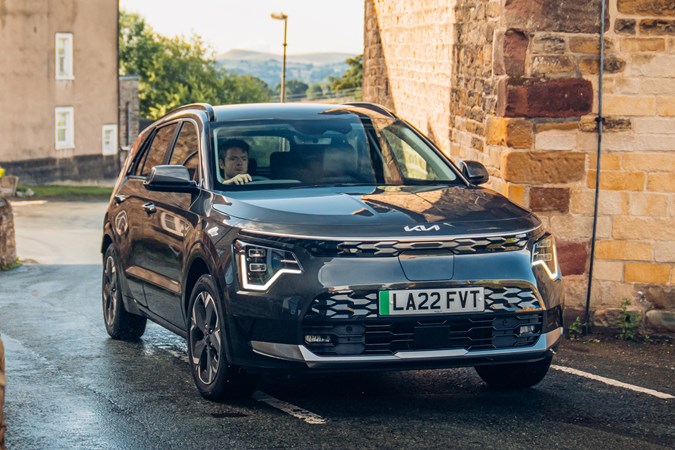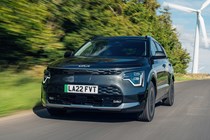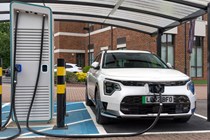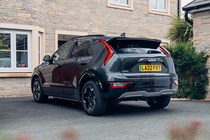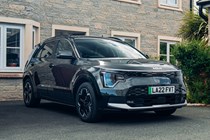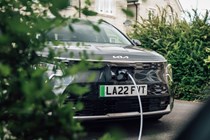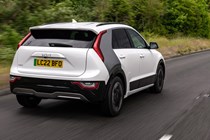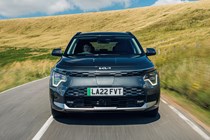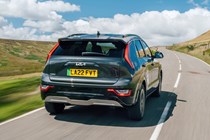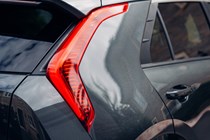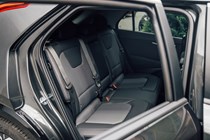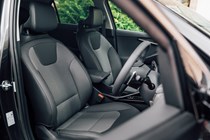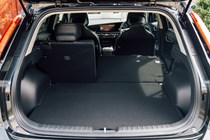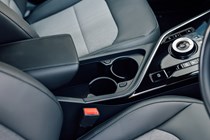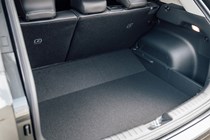Kia Niro EV engines, drive and performance
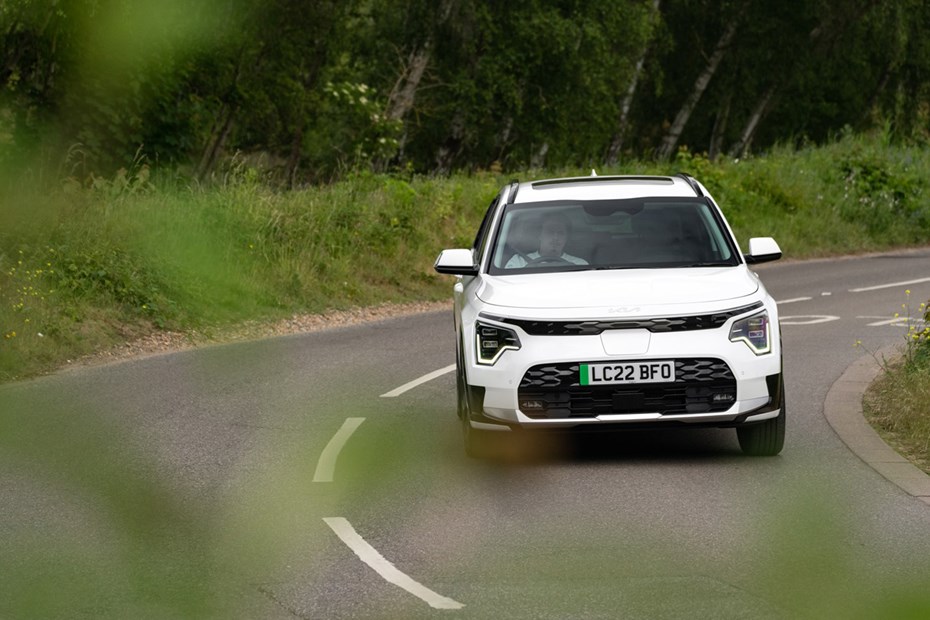
- Relaxed driving experience
- Fast enough for a family car
- Unsettled ride around town
Electric powertrains
There’s just one electric motor available in the Kia Niro EV. It produces 204hp and 255Nm of torque – and that latter figure, you might be surprised to hear, is around 140Nm less than the motor in old model. That sounds like a step backwards, but the change suits the Niro’s character well.
The old e-Niro had a habit of turning its front tyres to smoke when leaving junctions because its skinny eco rubber simply couldn’t contain the mountain of torque from the electric motor. The Niro isn’t about screaming away from red lights, though – it’s about making steady, safe progress. So, the reduction in torque makes the new car better to drive.
And it isn’t exactly slow. The Niro EV can sprint from 0–62mph in 7.8 seconds and reach a top speed of 103mph, which we think is more than enough for a family runabout. It’s considerably faster than the Jeep Avenger, which takes nine seconds to get to 62mph and tops out at 93mph. The Niro accelerates well when moving, too, with enough power in reserve to make confident overtakes.
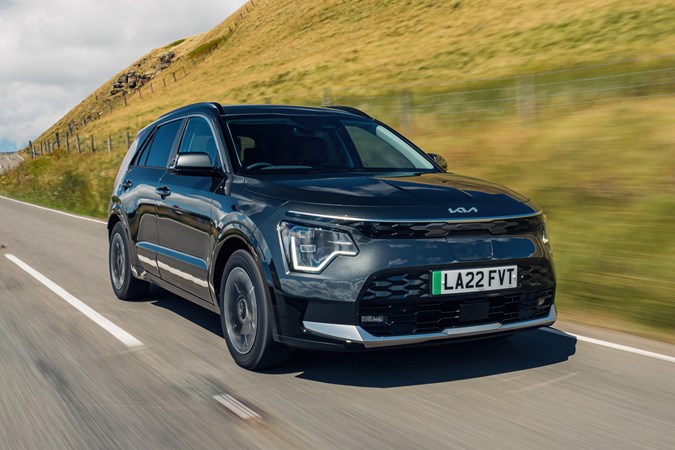
We found the car’s range indicator to be quite accurate as well. We consumed around 100 miles of electricity during an 80-mile drive, which isn’t bad considering we did said drive in the middle of a heatwave with the air conditioning on full blast. We don’t think that’s a bad result at all.
What’s it like to drive?
Relaxing. The Kia Niro EV isn’t a car that encourages you to carve around corners quickly or race over roundabouts. As mentioned above, the electric motor in this new car is a lot less urgent than the one fitted to the previous model and the suspension is geared more towards comfort than handling.
We’ll admit, the suspension is quite choppy around town, but it smooths out well once you’re up to motorway speeds. That slight bit of firmness also means body control is good so, if you do drive like a hooligan, there’s no need to worry about scraping the door mirrors on the tarmac.
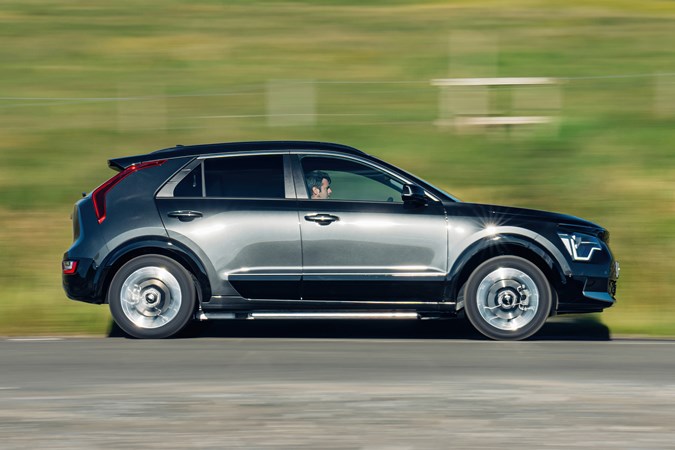
There are three driving modes, which you can cycle using a button on the steering wheel. Eco makes the motor feel a bit dead, Sport is slightly too jerky and Normal is pretty much ideal. You can also fiddle with the level of regenerative braking using the paddles behind the wheel. On its strongest setting, you can almost drive the car everywhere without touching the brakes.
If you’ve just stepped out of a petrol car, it can feel very strange having the car slow down like it’s braking when you lift off the accelerator – but you soon get used to it. In fact, it makes for a very relaxing driving experience because it encourages you to plan further ahead and drive more smoothly.
